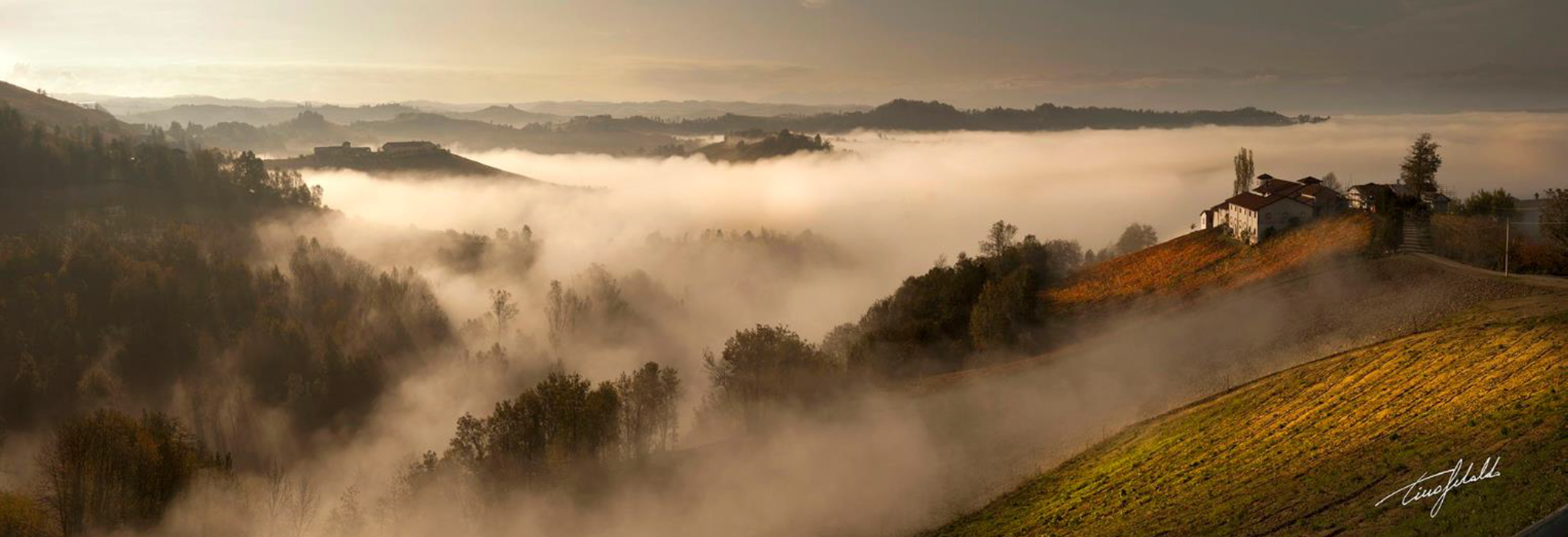2010 Maybe the greatest Barolo vintage ever?
In the Gregorian calendar there is a time „Before Christ” (BC), referencing to the years before the birth of Jesus Christ and there is a time referred to as „Anno Domini“ (AD) – from Latin „in the year of the lord“ – used for years after the birth of Jesus. If we applied that system to the more secular world of fine wine or particularly Barolo, there might as well be an era before 2010 and a time after 2010… Sounds a little dramatic? Let me lay down my thoughts for you.
Overall quality
2010 is widely considered one of the very best vintages Barolo has ever produced. Many of the leading critics have rated it higher or on the same level as the very best vintages of the last decades. Antonio Galloni, the founder of Vinous and one of the most respected wine critics and specialists for Piemonte, called it „one of the truly great modern-day vintages for Barolo“, and awarded it a rating of 98+ points. This almost perfect score implies that in his view, 2010 might be even superior to the great historic vintages of 1989 (98pt), 1978 (97pt), 1971 (98pt), 1961 (97pt), but also to the more recent great vintages of 2016 (98pt), 2006 (98pt) or 2004 (98pt). The Wine Advocate considers 2010 the best vintage since the beginning of their vintage chart in 1970 with a lofty score of 98 points. Wine Spectator is rating 2010 with 97 points a „classic vintage“, with only 2016 and 1996 being rated one point higher. Jancis Robinson is considering 2010 Barolo „outstanding“ and Alessandro Masnaghetti, BaroloMGA360, is rating 2010 with five stars, together with only a handful of other epic vintages.
Quality revolution – better winemaking
2010 has been the culmination of many great developments in the last decades. The influence of the „new school“ of Barolo in the 1980’s has found its way into many of the wineries. Originally, the quality revolution was initiated by some of the Barolo Boys (and one girl, Chiara Boschis) who found inspiration in France and then brought some of their new ideas back to Piemonte. As it is often the case, new developments need time, they can go a little overboard at the beginning, but then find their way to have a positive effect on many of the established routines. The excessive use of new small oak, picking almost overripe grapes, aggressive extraction with roto-fermenters and other interventionist techniques in the cellar now belong to the past. While many wines at the beginning of the 1990’s and early 2000’s tasted somehow international, there was a clear bounce back to more „Barolo with sense of place”. What is left of the Barolo Boys’ movement is meticulous farming and vineyard work, picking each plot at perfect phenolic and sugar ripeness, paying uncompromising attention to hygiene in the cellar, use of mostly larger (neutral) oak, but perfect cleanliness of the barrels/botti, too. 2010 was probably one of the first vintages, in which most wineries found their balance between the more modern techniques and influences and Barolo‘s sense of tradition and place.
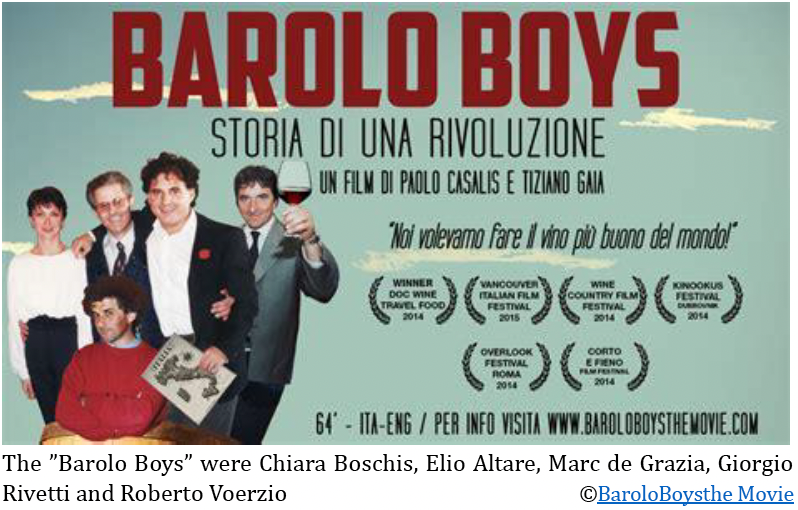
International demand and tourism
Between 2010 and the release of the 2010 vintage (in 2014), there seemed to be a strong increase in international demand for the wines of Barolo. While I could still buy 2008 Bartolo Mascarello Barolo from four different sources, I had to put in much more work for 2010 and with the 2011/2012 vintage,
it became virtually impossible to source these wines, even on established markets like Switzerland. Hand in hand with a strong increase in demand for the Barolo of the top producers, also international tourism to the Langhe region seemed to grow steadily. While back in the days, barely anyone spoke English in any of the restaurants of the region, British, Asian and especially American tourists now are very common, probably also due to the designation of the Langhe-Roero-Monferrato vineyards as UNESCO world heritage sites.

Broader attention to quality and generational succession
In the 1990’s and early 2000’s, the top of the quality hierarchy of Barolo was represented by maybe 10 – 20 wineries. But there also was quite a lot of Barolo in the market that was struggling with harsh tannin, slightly underripe fruit and just not too much appeal. Needless to say, that it also was a tough sell. Nowadays, there are literally dozens of very high-quality wineries producing Barolo of excellent quality with immense attention to detail and sense of place. This increase in quality was partially due to global warming, but also due to newer generations of winemakers and the next generation taking over. Many of these winemakers have studied oenology, worked abroad or at least at different wineries and regions to get inspiration and they have now been tasting broadly for at least two decades in purpose of com-paring their wines with some of the other great wines of the world. The chance of drinking any 2010 Barolo and having a bad experience is relatively slim. The same couldn’t be said 20 years ago with 1989 or 1990 two also very highly regarded vintages. The overall quality has increased so much in the mean-while, that in a vintage like 2010, there are now countless Barolo from „second or third tier“ producers that would provide a lot of joy and a complex and sophisticated drinking experience.
Classicism
2010 might have been the most classic vintage of the great vintages of the last decades. After a pretty cool long growing season, the wines show a certain austerity, freshness and classicism Barolo aficionados love, but the wines also show the results of better winemaking like softer tannin. In 2010 you will get the best of both worlds… old-school but full of finesse. Another great vintage, 2016, is significantly riper from my perspective. With global warming, it will become more and more difficult to see this kind of wines in the future.
THE TASTING
 On the 23rd of May 2024, we put the vintage 2010 to the test and had a broader tasting of some of the reference point wines of Barolo. The tasting was conducted blind at Chez Smith in Zurich. The overall impression was, that 2010 deserves all the praise and the superlatives that have accompanied the wines since they were released about 10 years ago. Some might still need a few more years in bottle, many seem to get into their early drinking window, and most of them seem to have a long a beautiful life ahead of them.
On the 23rd of May 2024, we put the vintage 2010 to the test and had a broader tasting of some of the reference point wines of Barolo. The tasting was conducted blind at Chez Smith in Zurich. The overall impression was, that 2010 deserves all the praise and the superlatives that have accompanied the wines since they were released about 10 years ago. Some might still need a few more years in bottle, many seem to get into their early drinking window, and most of them seem to have a long a beautiful life ahead of them.
Aperitif
Larmandier-Bernier, Extra-Brut Blanc de Blancs 1er cru Longitude, 93 Points
From a magnum bottle. Shiny yellow colour, pretty explosive, with notes of ripe pear, citrus, chalky minerality, some mint. Medium-full bodied, almost creamy in texture, with some medium-high acidity cutting through everything. Pretty long finish. A really nice BdB from this excellent producer.
Flight 1
Giuseppe Cortese, Barbaresco Rabajà 2010, 92 Points
Served as transitional wine between the Aperitif and the Barolos. In a beautiful place now, elegant and full of finesse, this is showing very pure notes of strawberry, some more bright red fruit, but also notes of mint, some graphite and tobacco leaf. It’s medium bodied with medium tannin that has melted away a little and some medium-high acidity adding good tension. This is very seamless and elegant, textbook Rabaja. Pretty long finish, too.
Giuseppe Mascarello & Figlio, Barolo Monprivato 2010, Castiglione Falletto, 91 Points
This was a controversial wine and it’s safe to say, that even after tasting many of the vintages that are considered very good here, I am still waiting for my „Monprivato moment“. Monprivato can be one of the most frustratingly erratic wines, that might be stubborn and closed one moment just to emerge into something nice two years later. I also find the bottle variation and the amount of flawed bottles at this winery unacceptable. Nevertheless, this is considered one of the reference point wines of the Barolo region by many. Having said all of this, this was a clean and obviously pristine bottle. Lighter ruby colour, with red fruit, some floral notes of violets, minerality, also some herbal notes. It‘s medium-bodied, lacks a little depth, with medium-high acidity. Medium+ tannin that was building up a little with more air. Medium finish. Slightly simple, but good elegance. I tasted this many years ago after release and the consensus at the table then was, that it‘s a little simple and light, almost like a good Nebbiolo Langhe. I had a similar impression again. I would probably drink this soon, as I am not sure if this is putting on weight or just drying out from here. There were different opinions on that at the table though.
G.D. Vajra, Barolo Bricco delle Viole 2010, Barolo Vergne, 96 Points
Bricco delle Viole from Vajra always is a very unique wine. It generally shows an incredible finesse and certain lightness of this higher altitude hillside vineyard, as well as particularly floral notes, but then the tannin is kicking in and this wine usually takes quite a long time to be in its perfect drinking window. This bottle is a top-notch example for this wine and it might be one of the very best vintages the amazingly competent and friendly Vajras have produced. Pretty open and very complex, deep, but lighter framed at the same time, very good minerality, floral notes/violets, some rose petals, also some red berries. Medium+ bodied, with high acidity and some medium-high tannin that is ripe but very present. Superb length. A fantastic Bricco delle Viole that might still be a few years away from prime drinking.
Flight 2
Paolo Scavino, Barolo Monvigliero 2010, Verduno, 93+ Points
Monvigliero has been all the rage lately, especially since Burlotto got perfect and almost perfect scores several times for their rendition of this prestigious Cru from Verduno. Paolo Scavino has been making a very nice version of Monvigliero, too. Stylistically very different from Burlotto (or also Frat. Alessandria, another benchmark producer here), this still shows that Monvigliero typical combination of elegance and finesse with a quite substantial tannic structure, like the iron fist in the velvet glove. As it is the house style here though, the Scavino wines always have an extra layer of fruit. Ruby colour, but darker than the other wines in this flight. Some notes of sweet spices, also some floral notes, menthol, licorice, maybe still a touch of oak, also some citrus zest. Medium-full bodied, with pretty high tannin and medium-high acidity and some rounder overall appearance due to the massive fruit. Not the most typical Monvigliero from my perspective, but a very nice wine and very charming.
Paolo Conterno, Barolo Ginestra 2010, Monforte d‘Alba, 92 Points
From an older established winery in Monforte (founded 1886) that I have always considered as very good, but maybe not in the first or second tier. These wines have sometimes shown a quite high level of extraction and from memory came off a little modernish, which seems to have changed a little based on this bottle.
Notes of darker plum, some ripe darker cherries, some menthol, also some graphite, some roasted notes too. Medium-full bodied, with slightly drying pretty high tannin, some medium+ acidity and medium length. This seems a little too extracted, maybe that‘s why the tannin was a little harsh. I would probably drink this soon as the fruit might dry out be-fore the tannin is softening. Still a very good Barolo, but just a little more rustic and less complex than some of the other bottles to-night.
Cavallotto, Barolo Riserva Bricco Boschis Vigna San Giuseppe 2010, Castiglione Falletto, 97+ Points
Cavallotto is an excellent winery in Castiglione Falletto that produces a range of pretty traditional wines, the Vigna San Giuseppe being their top wine from my perspective. These wines are always released late and show a remarkable level of fruit intensity, but also tannic and acidic structure. Usually, they take quite a while to come around. One of the wines of the night, this is super deep, layered, and complex, with notes of cedar wood, minerality, some tar, also crushed flowers, darker tonality, also some darker cherries, but also excellent freshness. This is showing pretty full-bodied and rich, with excellent depth but also superb freshness of pretty high acidity that is perfectly integrated. Very long finish. A superb Barolo with excellent potential. This could benefit from a few more years in bottle, but it‘s mindbogglingly good. Group WOTN (Wine of the Night)
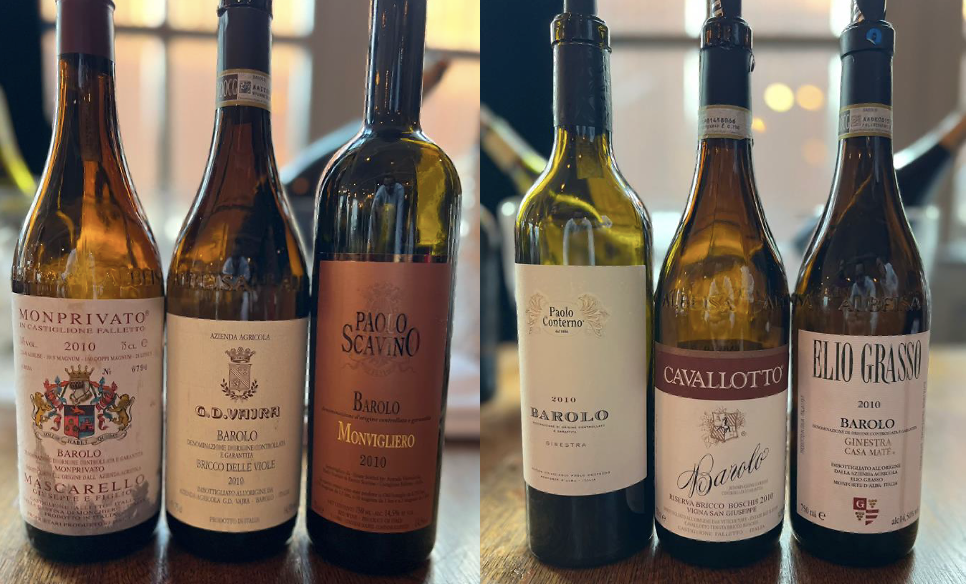
Flight 3
Elio Grasso, Barolo Ginestra Casa Matè 2010, Monforte d‘Alba, Not Rated
One of the reference point producers of Monforte, the Grassos make classic wines of great depth, structure and ageability. Particularly interesting is, that next to their flagship wine, the Barolo Riserva Rüncot, they produce two more different Ginestras, Casa Matè and Gavarini Chiniera from two different plots in the large Ginestra Cru. Casa Matè has a different soil composition, lower altitude and slightly different exposition and is always producing the richer, more structured and authoritative wine, while Gavarini Chiniera is usually the slightly lighter, more perfumed and finessed version. This time we were tasting the Casa Matè. Unfortunately, a pretty weird showing, with almost some oaky notes present (they only use large botti here for this wine), this might need more time and air. Darker plum, some cherries, also some herbal notes. Medium-full bodied, with medium persistence, good freshness and tannin, but overall weird showing. This seems very shut-down and dormant, rather than obviously flawed. I would give this another 5+ years. Not Rated, as I have had spectacular bottles of this before.
Bartolo Mascarello, Barolo 2010, Barolo, Not Rated
One of the cult producers in Barolo and unfortunately very difficult and pricey to find now. Since the passing of Bartolo Mascarello, his daughter Maria Teresa Mascarello has taken over the winery and is embracing the ultra-traditional approach her father has been following during his whole life. The wines here are made from different vineyards in Barolo and La Morra (Rocche dell‘Annunziata, Cannubi, San Lorenzo and Rué). The grapes of the different Crus are co-fermented (not blended at the end), which is almost unheard of today. While the wines have always been very good, sometimes great, the consistency and purity of the wines has even improved under the leadership of Maria Teresa. All the wines show incredible finesse, an almost Burgundian elegance while still being structured and undeniably Piemontese. From my perspective, today, Bartolo Mascarello represents the pinnacle of traditional Barolo only rivaled by a small handful of other producers (like G. Rinaldi, R. Conterno, maybe Cappellano, when they are on and the older Bruno Giacosa wines). Unfortunately, the wine gods gave us an imperfect bottle on this evening. At first perfumed, notes of red berries, some crushed flowers, some tar, minerality, also some sweeter notes and some mint. Then there was also something slightly off, almost unclean, a touch oxidative to it. The palate is medium-full bodied, with depth, some high acidity and medium-high tannin. Long finish. Aromatically closing up and breaking off, I am pretty sure this is not a representative bottle as I have had this 4-5 times over the last 5 years and every single bottle of it was absolutely glorious and close to a perfect score. It also didn‘t get better with air, quite the opposite. Not a perfect bottle, thus, not rated, there are no great wines, only great bottles.
Elio Altare, Barolo Brunate 2010, La Morra, 97+ Points
One of the modern legends, Elio Altare was one of the first of the „Barolo Boys“ to embrace new technologies, modern winemaking and the use of barriques after an inspirational visit in Burgundy. There is a fascinating story about how Elio was so determined to follow his new way, that after a disagreement with his father Giovanni about the use of new barrels he would cut up the old botti in the cellar with a chainsaw to make sure that there was no other option than replacing them. This act of rebellion was not taken lightly by his father and tragically, he disinherited Elio. Over the following years after the death of his father Giovanni, Elio had to buy back the vineyards and the winery from his siblings. Out of this tragic piece of family drama, a great winery emerged, and the wines of Elio Altare are now admired as some of the very best examples of more modern-styled Barolos. The wines combine an incredible depth of fruit, with impeccable balance and great elegance and finesse. Since 2016, Elios daughter Silvia has been running the winery. The oak is still slightly present here. But there is also great elegance, and super complex aromatics of sweet spices, some menthol, leather, sweet dark cherries, also some notes of crushed and candied violets. Deep, rich and powerful, this wine is showing full body and medium-high acidity that is adding good freshness. Super silky quality tannin. Very long finish. A „modern Barolo“ of the very highest level. I enjoyed this epic bottle with a little bit of sadness and nostalgia, too, as 2011 was the last vintage of the Altare Brunate and this epic wine is not produced anymore.
Flight 4
Giuseppe Rinaldi, Barolo Brunate 2010, Barolo, 98+ Points
Giuseppe Rinaldi was one of the absolute legends of the region. A man of many talents, he was both an engineer and wine-maker, but also a philosopher and out-spoken about the traditions of the Langhe as well as political issues. Unfortunately, Giuseppe Rinaldi passed away way too early in 2018. The winery is now mostly run by his two daughters, Marta and Carlotta, who are also very charismatic and joined him in the winery a few years earlier. Giuseppe Rinaldi was a strong believer in that Barolo needs a certain austerity and shouldn‘t provide immediate pleasure, but be more intellectual and in need of time to unfold. The style of wine produced by his daughters is still super traditional and with the highest respect for the legacy of their predecessors, but maybe a little more polished and elegant than the earlier wines. The table got quiet, when we tasted the Giuseppe Rinaldi Brunate. This is deep, layered and complex, showing notes of dark and darker red cherries, some balsamic notes, but also some herbal notes. There is an intriguing element of minerality and tar, tobacco, cedar wood and also some floral elements. Medium-full bodied, with medium-high perfect tannin, also some medium-high acidity and a super long finish. There is a trace of austerity, but at the same time incredible silkiness. Superb wine and one of the very best Barolos, not just from this vintage. Group WOTN runner up.
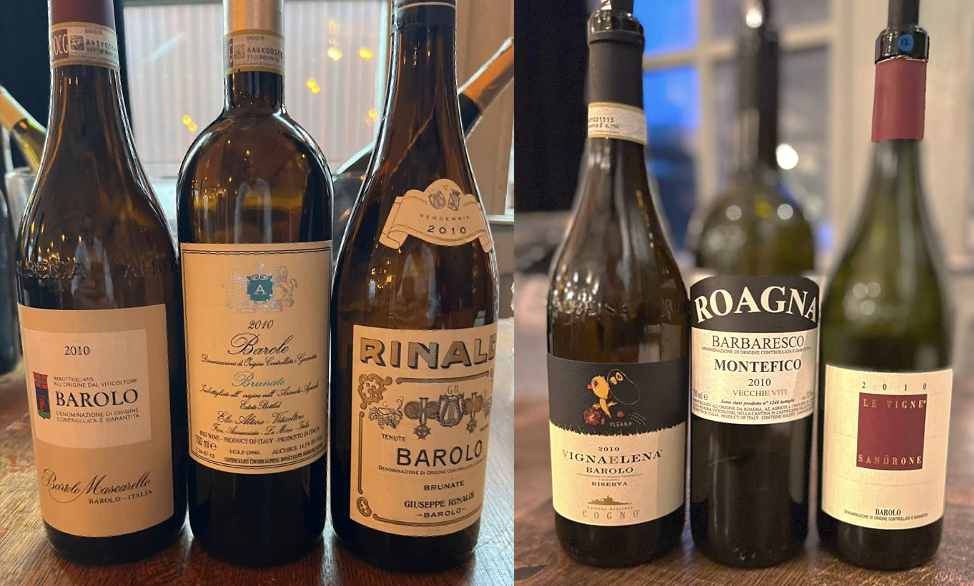
Evio Cogno, Barolo Riserva Vigna Elena 2010, Barolo/Novello, Not Rated
Cogno’s Riserva Elena yields from a specific vineyard in the Ravera Cru, that is still planted with an old clone of Nebbiolo, Rosé. The Rosé clone is known to produce wines that are lighter in structure and colour (hence the name), but are particularly fragrant and aromatic, usually very floral, too. Unfortunately, this bottle was damaged and came slightly oxidized, while still showing notes of sweet herbs, but also Maggi herbs/lovage, soy sauce, clearly flawed and therefore hard to judge, but the structure seemed very good.
Roagna, Barbaresco Montefico Vecchie Viti 2010, 97 Points
Roagna is a very well-known and respected winery located in Castiglione Falletto with holdings in some of the most prestigious Crus of Barbaresco and Barolo (e.g. Vigna Rionda). The style is decidedly classic, but with incredible purity of fruit and elegance. We thought it would be interesting to have a „Barbaresco-pirate“ of the highest level in this tasting, knowing that 2010 was classic, but much less consistent in Barbaresco than in Barolo. Montefico is an excellent Cru in Barbaresco, often producing wines with energy, freshness and tension, but also tannin that sometimes needs some time to integrate. The Vecchie Viti bottling is from a special plot with very old vines. This bottle was absolutely singing. Almost sweet notes of dark cherries, some crushed violets, sweetish notes of candied flowers, some herbal notes, menthol, overall finessed and elegant, but with great depth without being heavy. It is medium+ bodied, with excellent persistence and mid-palate length without weight again, this has pretty high acidity and medium+ tannin that is superbly ripe and soft. Very long finish. A superb wine of the highest level. This gave many of the top-notch Barolos a run for their money. Group WOTN 3.
Flight 5
Luciano Sandrone, Barolo Le Vigne 2010, Barolo, 97+ Points
Unlike many of the producers whose wines we tasted on this occasion, the Sandrone were not a historic winemaking family of Piemonte. Luciano Sandrone bought his first vineyards (Cannubi Boschis) in the 1970’s. Ever since then the quality of the wines got better and better and even as he was famous for being an innovator, even the most traditional Barolisti have nothing but respect for him and his wines. Decidedly modern-leaning, the wines have incredible elegance and finesse and the tannin management seems to be almost perfect, particularly in the last 10 years or so. Unfortunately, in 2023 Luciano San-drone passed away, another horrible loss in the world of fine wine and also as a great human being. His daughter Barbara, who had been working with him for many years took over the winery. The wines are combining some traditional qualities, as well as some more modern elements. With Cannubi Boschis, there is a single vineyard Barolo, which is not something super traditional, the Barolo Le Vigne on the other side is a blend of different Crus (in 2010 Vignane/Barolo, Baudana/Serralunga and Merli/Novello). The wine was aged in 500l tonneaux. One of the few Barolos that was awarded 100 points by Antonio Galloni (Vinous). This is showing superb aromatics and texture. Expressive but still young notes of dark red cherries, mint, some menthol, also some floral notes of rose petals, tar, sweet spices like cinnamon, overall extremely elegant but powerful at the same time. It’s medium-full bodied, with superb persistence, it also has high acidity and polished medium-high tannin. Superb length. A great wine of the highest level. Group WOTN 4.
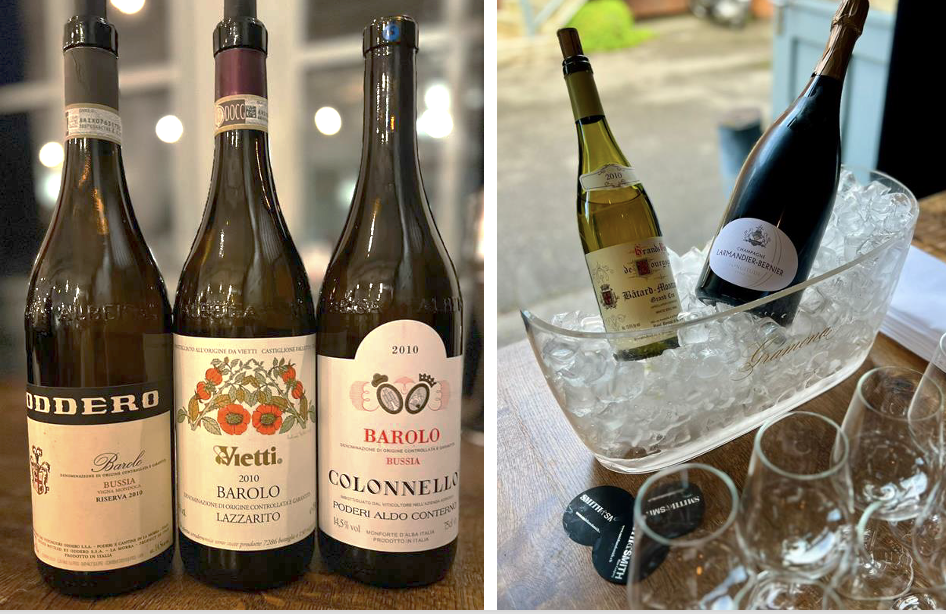
Oddero, Barolo Bussia Vigna Mondoca 2010, La Morra, 96 Points
Oddero is another one of the historic families of the Barolo region. They have been producing wines under their own label since the end of the 18th century. The style is very traditional, over the decades there was a little bit of inconsistency, but lately Oddero has been on a roll producing some really memorable wines from different very good Crus. There was no exception here, the Bussia Vigna Mondoca was showing really beautifully. There are notes of darker fruit, some blue-berries, but also dark cherries, some graphite, cedar wood, some herbal notes too. There are mostly savory herbs like rosemary and thyme. It‘s pretty full bodied, with really good persistence, the wine has medium-high tannin that is very good quality and some pretty long finish.
Flight 6
Vietti, Barolo Lazzarito 2010, Serralunga d‘Alba, 95+ Points
The Vietti/Currado family has been producing wines in the Langhe for four generations. While Luca Currado‘s father, Alfred Currado-Vietti, was one of the first winemakers that started producing single vineyard wines in the Barolo region in the 1960ies, it was under the visionary leadership of Luca that the winery reached their prime, with several wines from different communes reaching world-class level. A few years ago, the Currados sold the winery to American investors, the Krause family, which was quite a shock for the region. Very recently, Luca has also left his executive position and has started a new winery, as well as a liquor business with his wife Elena. Lazzarito has been one of the more modern styled wines from Vietti, combining deep and dark Serralunga fruit from tiny yields with some new oak and state of the art winemaking. Deeper and darker perfume, notes of black plums, some graphite, tar, also a touch of black tea, some citrus zest and a beautiful minerality. The wine is full-bodied, pretty dense and with high tannin that is very good quality, also some medium-high acidity that is adding good balance and freshness. Long finish with building complexity. There is a touch of dryness on the finish but this might just need some more time to integrate the pretty massive tannin a little better.
Aldo Conterno, Barolo Bussia Colonello 2010, Monforte d‘Alba, 94 Points
This is a historic winery from one of the important families of Piemonte. There are several Barolos from several plots within the large Bussia Cru, Colonello being one of them. The wines are sometimes a little bit polarizing. While the quality is undeniably very good, the house-style is very pronounced with incredibly dense, powerful wines that are super concentrated/extracted. The 2010 Colonello is no exception. Deep dark and powerful, probably the most powerful and dense of all the wines tasted. This is showing notes of black cherries, some cassis, tar, also some cedar wood, some (oak?) spice, lavender, some dark herbal menthol note, too. From my personal perspective, there is almost a little too much of everything. Full-bodied and rich and powerful, this is pretty much as extracted as it gets. High tannin that is a little bit rough, medium-high acidity adding balance. There is good length. A well-made, full-throttle and super powerful wine.
Paul Pernot et ses fils, Bâtard-Montrachet (Grand Cru) 2010, 95 Points
Served between two flights of Barolo as decadent and tasty „reset button“. Explosive, buttery and rich, with notes of brown butter, lemon curd, some white flowers, popcorn and sweet spices, there is also some wet stone minerality adding complexity. Pretty full-bodied and rich, with medium+ acidity adding some freshness and a pretty long finish. This was a really nice wine, while not easy to judge between all these tannic top-notch Barolos.
| Popularity Rank |
2010 Barolo tasted |
| 1 | Cavallotto, Barolo Riserva Bricco Boschis Vigna San Giuseppe |
| 2 | Giuseppe Rinaldi, Barolo Brunate |
| 3 | Roagna Barbaresco Montefico |
| 4 | Luciano Sandrone, Barolo Le Vigne |
| 5 | Elio Altare Barolo Brunate G.D. Vajra, Barolo Bricco delle Viole Oddero Barolo Bussia Vigna Mon-doca |
| 8 | Vietti, Barolo Lazzarito Paolo Scavino, Barolo Monvigliero Giuseppe Cortese, Barbaresco Rabajà Giuseppe Mascarello, Barolo Monprivato Paolo Conterno, Barolo Ginestra |
| Not Rated | Bartolo Mascarello, Barolo Elio Grasso, Barolo Ginestra Casa Matè Evio Cogno, Barolo Riserva Vigna Elena |
Autor: Markus Kumschick, WSET III
August 2024

